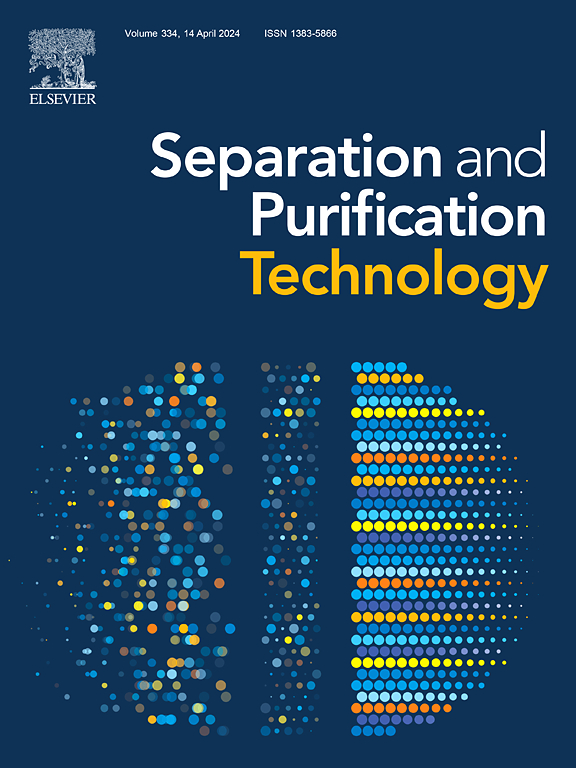Versatile ·OH! its roles on NDMA accumulation during ozonation of amines: A review
IF 9
1区 工程技术
Q1 ENGINEERING, CHEMICAL
引用次数: 0
Abstract
Amines with dimethylamine (DMA) groups were reported to form N-nitrosodimethylamine (NDMA) directly during ozonation. The conventional view is that NDMA formation (YF) is mainly attributed to ozone (O3), whereas hydroxyl radicals (·OH) dominates NDMA degradation (YD) and does not contribute to its formation. In fact, the ·OH with strong oxidation ability can influence NDMA formation by transforming precursors into intermediates with distinct NDMA molar yields compared to those of parent compounds (YF-intermediates ≠ YF-parent). In other words, whether ·OH promotes or inhibits NDMA accumulation (Y = YF − YD) depends on the relationship between its formation changes (ΔYF = YF-intermediates − YF-parent) and degradation (YD) caused by ·OH. In addition, ·OH can intervene in the formation of precursor (unsymmetrical dimethylhydrazine (UDMH)) or nitrosating agents (nitrous anhydride (N2O3) & dinitrogen tetroxide (N2O4)) when ammonia (NH3) or nitrite (NO2−) are present in the system. The final NDMA accumulation would be determined by the amounts of O3, ·OH as well as the O3/·OH ratio, which are significantly affected by the ozone dosing amounts, the pH of the solution and co-existed components in the actual water matrix during ozonation. This review would provide an overall view of the role of O3 and ·OH on NDMA accumulation during ozonation, providing important insights for optimizing the ozonation processes and reducing the risk of NDMA in drinking water.


多功能·哦!其在氨氧化过程中NDMA积累中的作用综述
具有二甲胺(DMA)基团的胺在臭氧化过程中直接生成n -亚硝基二甲胺(NDMA)。传统观点认为NDMA的形成(YF)主要归因于臭氧(O3),而羟基自由基(·OH)主导NDMA的降解(YD),对NDMA的形成没有贡献。事实上,具有强氧化能力的·OH可以通过将前体转化为与母体化合物相比具有不同NDMA摩尔产率的中间体来影响NDMA的形成(YF-intermediates ≠ YF-parent)。也就是说,·OH是促进还是抑制NDMA积累(Y = YF − YD)取决于其形成变化(ΔYF = YF中间体 − YF母体)与由·OH引起的降解(YD)之间的关系。此外,·OH可以干预前体(不对称二甲肼(UDMH))或亚硝化剂(亚氮酸酐(N2O3))的形成;当系统中存在氨(NH3)或亚硝酸盐(NO2−)时,生成四氧化二氮。最终NDMA的积累将由O3、·OH以及O3/·OH比值决定,臭氧投加量、溶液pH和臭氧氧化过程中实际水基质中共存组分对其有显著影响。本文综述了臭氧和·OH在臭氧化过程中NDMA积累中的作用,为优化臭氧化过程和降低饮用水中NDMA的风险提供了重要的见解。
本文章由计算机程序翻译,如有差异,请以英文原文为准。
求助全文
约1分钟内获得全文
求助全文
来源期刊

Separation and Purification Technology
工程技术-工程:化工
CiteScore
14.00
自引率
12.80%
发文量
2347
审稿时长
43 days
期刊介绍:
Separation and Purification Technology is a premier journal committed to sharing innovative methods for separation and purification in chemical and environmental engineering, encompassing both homogeneous solutions and heterogeneous mixtures. Our scope includes the separation and/or purification of liquids, vapors, and gases, as well as carbon capture and separation techniques. However, it's important to note that methods solely intended for analytical purposes are not within the scope of the journal. Additionally, disciplines such as soil science, polymer science, and metallurgy fall outside the purview of Separation and Purification Technology. Join us in advancing the field of separation and purification methods for sustainable solutions in chemical and environmental engineering.
 求助内容:
求助内容: 应助结果提醒方式:
应助结果提醒方式:


